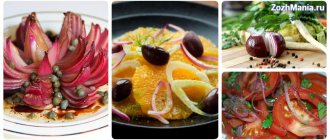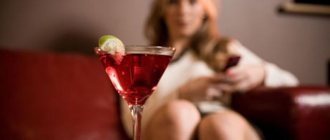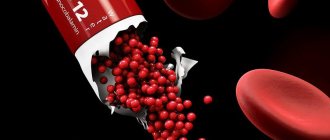The fact that the buyer loves “with his eyes” has been known for quite some time. After all, we all try to choose exactly those products on the supermarket shelves that look the best and attract with their appearance. But sometimes this is exactly what you have to pay for, because behind an attractive appearance there are most often chemical dyes that are quite harmful to the human body. One such food coloring is Charming Red AC, which is labeled E129.
Features of synthetic dye
This dietary supplement has various names: Cl Food Red 17, Allura Red AC, CI16035. But it is best known as Charming Red AC or food additive E129. Its chemical formula is C18H14N2Na2O8S2.
This substance is small granules or powder, rich dark red in color. It is most often used as a sodium salt, but is sometimes used as a potassium or calcium salt.
Contrary to popular belief, the red charm dye is not extracted from cochineal insects. Another equally popular red dye, carmine, is extracted from the females of these bugs. Substance E129, in turn, was previously made from coal tar, and is currently extracted from petroleum products.
This synthetic additive was first used in the United States, in an attempt to replace another food coloring, amaranth.
Red charming AC is odorless, soluble in water, glycerin and alcohol and absolutely insoluble in oily liquids and fats.
It contains sodium sulfates and chlorides, main dyes and by-products, as well as other organic compounds. This powder is quite resistant to acids, light and high temperatures. It begins to melt when exposed to temperatures exceeding three hundred degrees Celsius.
E129 Red Charming AC
Charm Red AC (Allura Red AC, Allura Red, Food Red 17, FD&C Red 40, E129)
Charming red is a substance of synthetic origin, an orange or red azo dye, registered as a food additive - dye.
The water-soluble powder is usually used as a sodium salt, but can also be used in the form of calcium and potassium salts. In aqueous solution, its maximum absorption is about 504 nm (calorizator). In the international classification of food additives it has code E129. Chemical formula: C18H14N2Na2O8S2.
General characteristics of E129
Red Charm AC is a by-product of the petroleum refining industry and can also be obtained from coal tar. The substance is a dark red powder or small granules, highly soluble in water, resistant to light and high temperatures. E129, when combined with blue dyes, gives a violet tint, and with yellow dyes – green. Initially, E129 was used in the USA as a substitute for food coloring E123, which was banned almost everywhere.
Harm E129
According to unconfirmed data, E129 has a carcinogenic effect, causing allergic reactions and hyperactivity in children and adolescents. It has been precisely established that the use of products containing E129 Red Charming AC is strictly prohibited for persons who have a negative reaction to aspirin. The daily intake of E129 is set at 7 mg/kg. E129 Red Charming is on the list of additives banned in 9 European countries.
Application of E129
Charming red AC is used in the production of breakfast cereals, baking mixes and jelly, shelf-stable chocolate biscuits, and candy bars. The dye is used in winemaking to give dry wine materials a bright color; E129 is also included in some types of ice cream; it is contained in fruit ice, sausages, seasonings, spices, and mustard.
In addition to the food industry, E129 Charming Red AS is used in the production of decorative cosmetics (blush, powder, lipstick) and as a dye for medicines.
Use of E129 in Russia
On the territory of the Russian Federation, E129 Charming Red AS is approved for use as a food coloring, subject to strict adherence to daily consumption standards.
Discuss on the forum
Dye application and leading manufacturers
This food additive is prohibited for use in a number of European countries, among which are: France and Denmark, Belgium and Norway, Sweden and Switzerland, Austria and Germany. In Ukraine, Russia, EU countries, New Zealand and Australia, such a ban does not exist.
This red powder is often used in the pharmaceutical industry, as well as in the production of decorative cosmetics and household chemicals.
It is also very common as a dietary supplement and is included in various food products:
- red caviar and fish;
- alcoholic and non-alcoholic drinks;
- processed cheeses;
- ice cream and various desserts;
- some types of sausages, sausages and meat products;
- confectionery and bakery products;
- vegetables and fruits in glaze.
In the Russian Federation, this type of dye is produced by the Giord corporation. The substance is produced in granular, powder form, and also in the form of varnishes. Typically, coloring requires from one to two hundred and fifty milligrams of the substance per kilogram of the finished product.
In this case, the color of the product will be significantly influenced by the acidity, fat content of the product, sugar content and alcohol base.
India is also one of the leading producers of this dye. Manufactured by ROHADYECHEMLtd. powder, packaged in ten-gram plastic bags.
Food coloring E129 (Charming Red AC)
Name: Charming Red AC E129 Other names: E129, E-129, English: E129, E-129, Allura Red AC Group: Food additive Type: Food coloring Effect on the body: dangerous Approved in countries: Russia, Ukraine, EU
Characteristics: Food additive E-129 or Charming Red AC is a synthetic substance, a dye of chemical origin.
Red charm is a powder or granules that is dark red or orange. It dissolves well in water. The shade is similar to E124. When mixed with blue dye, a purple tint can be obtained, and when mixed with yellow, a brown color can be obtained. The additive is resistant to light and temperatures up to 135 °C. The additive was originally derived from coal tar. At the moment, the dye is produced from petroleum products. Classified as a hazardous substance. Application: Initially, E129 dye was used in the USA as a substitute for the more dangerous Amaranth dye. Among many other dyes, charming red is one of the less dangerous ones. Therefore, its use in the food industry is permitted. Thus, it is used in the manufacture of confectionery products, medicines, cosmetics, including the manufacture of decorative cosmetics. E-129 can be found in the production of baked goods, chocolate products, and breakfast cereals. The daily intake rate is 7 mg/kg body weight. In the Russian Federation, the use of this additive is permitted in the production of bitter soda drinks and wines, some sausages, ice cream, fruit ice, desserts, and fermented milk products. Also used in the production of canned fruits, jellies, and baked goods and muffins. Used in the manufacture of seasonings and spices, sauces, mustard. Dye E129 is used for stamping meat. Another use of the additive is in the production of liquid detergents (shampoos, gels and foams). Permitted for use in the medical and cosmetic industry for coloring preparations.
Effect on the human body: After the dye became widely used in production, concerns arose that it was a carcinogen and could cause cancer. But E129 has the least health risks compared to other supplements. The dye should not be consumed by people who are sensitive to aspirin. E-129 causes allergic reactions, as well as increased sensitivity and activity in children.
Beneficial and harmful properties of the product
The food additive code E129 is considered one of the safest synthetic dyes today. It is forbidden to eat red charming AC for those people who are hypersensitive to aspirin.
This substance is often the cause of increased childhood hyperactivity and causes attention deficit disorder.
The E129 additive has long been classified as a carcinogen that can cause cancer. However, modern research carried out in this area has destroyed the established misconception regarding this dye. The fact is that such suspicions were caused by the technology with which this chemical compound is produced. To obtain it in chemistry, the carcinogenic substance para-Cresidine is used, but the resulting charming red product contains absolutely no impurities or traces of para-Cresidine.
Modern studies conducted at the Linus Pauling Research Institute have proven the anticarcinogenicity of this substance. As a result of experiments with rainbow trout, which is often used for cancer research, it turned out that red charming AC blocks the activity of carcinogens due to its ability to form complexes with them.
Best materials of the month
- Why you can't go on a diet on your own
- 21 tips on how to avoid buying stale food
- How to keep vegetables and fruits fresh: simple tricks
- How to curb your sweet cravings: 7 unexpected products
- Scientists say youth can be extended
The experimental fish were fed food laced with the carcinogen aflatoxin combined with red charm. As a result, it turned out that those who ate the carcinogen with the dye had fifty percent less incidence of cancer than those who ate only aflatoxin. When a synthetic substance was mixed with dibenzopyrene, rates of stomach cancer decreased by half, and liver tumors began to occur less frequently by forty percent.
Summarize
- Charm Red AC (E129) is a synthetic food coloring made from petroleum.
- While health organizations' conclusions are that Red Adorable AC poses little health risk, the dye may cause allergies and behavioral impairment in children with ADHD.
- The coloring goes by several names and is commonly found in dairy products, sweets, snacks, baked goods and beverages.
Tags: Food coloring
- Related Posts
- Annato: what is this? Application, benefits and harm
- What is gellan gum? Application, benefits and harm
- What is sodium caseinate? Everything you need to know
« Previous entry
E additives influence, harm, danger
Metabolism and toxicity Decomposition products are excreted in feces and urine. The main metabolite is cresidine sulfonic acid.
Hygienic standards
ADI 7 mg/kg body weight per day. In the Russian Federation, it is allowed as a dye in bitter soda drinks, bitter wine, made according to recipes approved by the State Sanitary and Epidemiological Supervision of the Ministry of Health of the Russian Federation, in quantities up to 100 mg/l; in sausages containing more than 6% grains and legumes; products made from minced meat (“urban meat”) with a content of grains, legumes and vegetables of more than 4% in an amount of up to 25 mg/kg (clauses 3.10.8, 3.10.14 SanPiN 2.3.2.1293-03); in ice cream, fruit ice, desserts, including flavored dairy products in amounts up to 150 mg/kg, in complete dietary food mixtures, soups in amounts up to 50 mg/kg; in glazed fruits and vegetables, canned (colored) fruits, dry snacks based on potatoes, grains or starch, with extruded or exploded spices, alcoholic drinks, flavored wines and drinks based on them, fruit wines (still and sparkling), cider, rich bakery and flour confectionery products, pasta in quantities up to 200 mg/kg; in decorative coatings, sauces, seasonings (dry and paste), pickles, etc., salmon fish, surimi minced fish in amounts up to 500 mg/kg; in flavored processed cheeses, pastes - fish and crustaceans, smoked fish, dry snacks based on potatoes, grains or starch, with spices except for extruded or exploded spicy snacks, solid biologically active food additives, meat and fish analogues based on vegetable proteins, flavored soft drinks in quantities up to 100 mg/kg; in mustard, fish caviar, biologically active food additives, liquid, sugary confectionery products in quantities up to 300 mg/kg; in semi-finished crustacean products, boiled in quantities up to 250 mg/kg; edible coatings for cheeses and sausages in quantities according to TI individually or in combination with other permitted dyes (clause 3.11.1 of SanPiN 2.3.2.1293-03).
Application
Water-soluble dye is used to stamp meat. Alone or in mixtures with other dyes can be used for coloring confectionery, drinks, etc. The dosage is 0.05-0.5 g/kg.
By mixing with blue dyes you can get a purple tint, which turns into brown when adding yellow dyes. The shade of aluminum varnish can be changed in the same way by mixing it with varnishes of the above-mentioned dyes.
Other areas of application: in the EU and USA it is approved for coloring all pharmaceutical and cosmetic products, used for coloring shampoos, bath foams, liquid soaps and alcohol-containing perfumes.
E129 - harm and benefit
For a long time, the substance was considered carcinogenic, leading to the development of cancerous tumors.
However, a more detailed study refuted this theory and even proved the opposite - the dye slows down and prevents the development of this disease.
Such data were provided by the Linus Pauling Institute after experiments on trout.
Also, the presence of E129, a trace of the carcinogenic substance para-Cresidine, which is an intermediate in the synthesis, has not been proven in the supplement.
Important. This is where the good news ends, as research from the University of Southampton proves the connection between the dye and increased hyperactivity in the behavior of children with the syndrome of the same name.
In addition, the food additive causes allergic reactions in people with individual sensitivity to aspirin.
Of course, excluding E129 from the menu of sick children will not cure them, but limiting the consumption of the supplement will reduce the manifestations of the disease. After studying the reaction of children with attention deficit hyperactivity disorder, the question arose about banning the dye.
Effect on the body[edit | edit code]
Appearance of an aqueous solution of Red Charm AC
Possible behavioral and neurological consequences[edit | edit code]
On 6 September 2007, the UK's Food Standards Agency (FSA) revised its advice on some artificial food additives, including E129. The report's author, Professor James Stevenson of the University of Southampton, said his findings suggested a possible link between the consumption of certain mixtures of artificial food colors and the preservative sodium benzoate and an increase in hyperactive behavior in children.[1][2]
The food colors tested in the study were: Tartrazine (E102), Quinoline Yellow (E104), Sunset Yellow (E110), Karmazine (E122), Ponceau 4R (E124), Charm Red AC (E129) and the preservative Sodium Benzoate (E211) )[3].
The study showed an increased level of hyperactivity, the manifestation of attention deficit hyperactivity disorder (ADHD), as well as a lower level of IQ in the observed children. The UK Food Standards Agency has reported that eliminating certain artificial colors (Sunset Yellow, Quinoline Yellow, Carmoisine, Allura Red, Tartrazine and Ponceau 4R) from the diet of hyperactive children may have some beneficial effects[4].
On 10 April 2008, the FSA called for a voluntary phase-out of food coloring (but not sodium benzoate) from 2009.[5] In addition, it recommended to carry out an action to remove dyes from food and drinks within a certain period in the European Union[6]. However, the FSA highlighted the need for further research and stated that due to the narrowness of the research, its results cannot be considered generalizable to the general public[2].
There is currently no evidence of the effect of Red Charm on ADHD behavior in children[7]. It is possible that certain food colors may act as a trigger in those who are genetically predisposed to ADHD, but the evidence base for these claims is weak[2][8].
Possible carcinogenic or anti-carcinogenic effect[edit | edit code]
Red Charming AC in Candy
After Red Charming AC appeared on the market, there were concerns that it was a carcinogen, but subsequent studies have not proven this. The first reports of its use causing tumors were due to the presence of para-Cresidine. Although para-Cresidine is an important reagent in the production of Red Allure AC and is known to be a carcinogen, subsequent studies have found no traces of para-Cresidine in Red Allure AC products.
On the other hand, there is evidence of the anticarcinogenic effect of this substance. Recent research conducted by Gayle Orner from the Linus Pawling Institute at Oregon State University has shown that Red Charm can block the action of carcinogenic compounds by forming complexes with them. When experimental fish ate a combination of the carcinogen aflatoxin and a dye, they had 50% fewer malignant liver tumors than those that ate the carcinogens alone. And in trout that ate a mixture of food with dibenzopyrene and “red charm”, stomach cancer was half as common and liver tumors were 40% less common[9].







